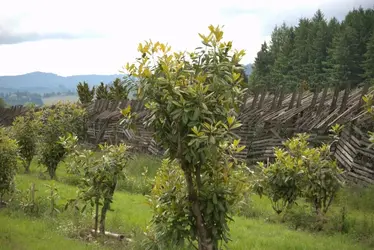haddit_up2here
TPF Noob!
- Joined
- Oct 13, 2013
- Messages
- 2
- Reaction score
- 0
- Location
- Earth
- Can others edit my Photos
- Photos NOT OK to edit
My Nikon is not my first SLR. I had a film SLR (a Minolta...the model escapes me) that had all bells and whistles of aperature and shutter speed, so I was no stranger to manual focus, f-stops, and getting the best shot when I got my Nikon (I had, probably, at least 5 years under my belt).
I've been using my camera for about three years now and, I'm not joking, EVERY SINGLE photograph has come out blurry. Even when I set it on a tripod, have the ISO and shutter speed set fast, I still get blurry photos. This is very infuriating since I'm definitely not a newbie photographer.
I went into a camera shop and the photo guys did a simple test with patterns on a white peice of paper and they said, "nah, it's your problem."

I guess it is. Here is one example attached. See how the whole image is blurry? Every single photo has been like that. Any ideas? Thanks in advance.
In case you aren't able to get the exif data, here it is:
File name: blurry_image.jpeg (Standard EXIF Tags)
>>> Photograph Information <<<
White Balance : Manual
Sharpness : Normal
Saturation : Normal
Metering Mode : Spot
Light Source : Cloudy weather
ISO Speed Ratings : 100
Focal Length : 85.0 mm
Flash : No flash
FNumber : F5
Exposure Time : 1/160 s
Exposure Program : Aperture priority
Exposure Mode : Auto
Exposure Bias : -1/3 EV
Contrast : Normal
I've been using my camera for about three years now and, I'm not joking, EVERY SINGLE photograph has come out blurry. Even when I set it on a tripod, have the ISO and shutter speed set fast, I still get blurry photos. This is very infuriating since I'm definitely not a newbie photographer.
I went into a camera shop and the photo guys did a simple test with patterns on a white peice of paper and they said, "nah, it's your problem."

I guess it is. Here is one example attached. See how the whole image is blurry? Every single photo has been like that. Any ideas? Thanks in advance.
In case you aren't able to get the exif data, here it is:
File name: blurry_image.jpeg (Standard EXIF Tags)
>>> Photograph Information <<<
White Balance : Manual
Sharpness : Normal
Saturation : Normal
Metering Mode : Spot
Light Source : Cloudy weather
ISO Speed Ratings : 100
Focal Length : 85.0 mm
Flash : No flash
FNumber : F5
Exposure Time : 1/160 s
Exposure Program : Aperture priority
Exposure Mode : Auto
Exposure Bias : -1/3 EV
Contrast : Normal










![[No title]](/data/xfmg/thumbnail/31/31088-b509581dfd5e8b6b36c83266751654fc.jpg?1734159214)





